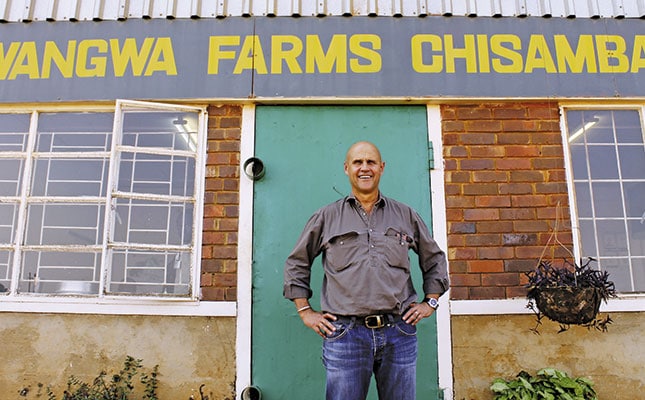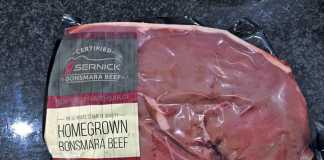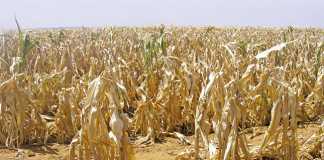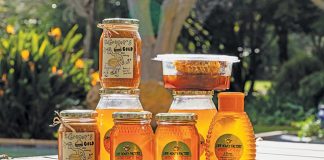
Situated in the Chisamba area of central Zambia, Wangwa Farms is a large and diverse farming operation, even by Zambian standards. What makes it even more impressive is the progressive vision that owners Peter and Carla Luyt have for their 4 000ha agribusiness.
The couple, with the aid of three trusted managers, have run the farm since 1994. Not content with having Zambia’s more conventional farming enterprises such as summer maize, soya beans, winter wheat and beef cattle under their belt, they are now diversifying into pig breeding, aquaculture and sheep farming, all of which are more unusual in Zambia.
Wangwa Farms also adds value by milling its maize on-farm into feed for the farm’s livestock and to sell to other livestock farmers. There is enough on-farm demand for the mill to be used solely to produce pig feed for Wangwa’s 2 000 breeding sows. The Luyts plan to expand the mill as a precursor to growing their piggery and establishing a large-scale broiler production enterprise, in addition to milling products for sale.

Wangwa Farms has a 14 000t- capacity grain storage, handling and milling facility.
According to Peter, Zambia’s middle class may be growing but is still too small to justify large-scale expansions and investments into, for example, pig and sheep enterprises. These enterprises on Wangwa Farms, he explains, are at the scale that the Luyts think is profitable given current domestic demand, and can be grown in line with an increase in demand.
Beef production
During the dry season, weaners graze on natural veld and pastures, and are moved to an on-farm feedlot during the rainy season. In the heavy downpours that typify Zambia’s summer rainy season, using the feedlot avoids feed going to waste and prevents decreases in the weaners’ average daily gains.
Wangwa Farms finishes its slaughter beef animals at an average of 470kg live weight at 14 months old. These finished animals are sold to Zambia’s choice beef market, while older cull cows are sold to the standard beef market.
Currently, all beef animals are sold to Zambeef Products, Zambia’s largest integrated agribusiness. Peter, however, wants to take greater control of the prices he achieves, and to this end intends to establish a butchery and restaurant, aimed at Zambia’s middle class, on the busy national road that runs along one of Wangwa Farms’s boundaries. He is confident that these two establishments will increase beef profits and that he will have greater control over the quality of the beef – and other meats – that will be available at the butchery.
Pig production
Peter and Carla produce pork commercially and are also agents for PIC pig genetics in Zambia. Their on-farm PIC gene transfer centre imports boars from Europe, taps them for semen, and sells this semen to the growing commercial piggery industries in Zambia and its neighbours. The centre also breeds stud PIC sows for sale to the commercial piggeries in these countries.
“We now even have small-scale Zambian farmers who arrive on bicycles to buy a few straws of top-quality 337 PIC boar semen to artificially inseminate their few sows with,” says Peter.
“By doing so, these farmers are improving the genetics and productivity of their breeding sow herds, are getting better money for the better pigs that they’re selling to processors, and are then able to grow their pig farming businesses.”
He says that in Zambia it is important to be as self-sufficient as possible.
“The less time and money you have to spend travelling to Lusaka and back for supplies, the better. The best investment a farmer can make is a 100t weighbridge. We use ours to weigh almost everything that comes onto or goes off the farm, including diesel and molasses. This really helps to minimise problems such as theft and disputes between us and buyers and suppliers.”
Crop production
Wangwa Farms has a small crop quality testing laboratory at its on-farm crop storage facility, and each land’s crop yield and quality is recorded prior to storage and processing. In addition, the farm can compare its own quality control results of the wheat and soya bean crop with those of buyers once it has been removed from the silos and delivered to the clients.
The feed that the farm produces is analysed in the laboratory using a US$75 000 (R1,1 million) near-infrared analysis (NIR) machine. This also helps minimise potential conflicts between Peter and his buyers. The farm can also use the NIR machine to analyse the nutrient values of pig slurry used as organic fertiliser on the croplands, or hay that has been grown, cut and baled on-farm for inclusion in livestock feed rations.
The operation has its own fleet of eight trucks and 15 trailers for transporting inputs to the farm and products from the farm. These Mercedes trucks were bought in the UK, second-hand, with 400 000km each on the odometer. The purchase price and freight cost for each totalled US$50 000 (R730 000). The trailers, also second-hand, were purchased for a total purchase price and freight cost of about US$20 000 (R290 000) each.
“We put Geotab GPS vehicle tracking in each of our trucks and trailers, and we employ good drivers. This all makes for an efficient and reliable road transport fleet that we have full control over. And we don’t have to wait for transport contractors to become available when we’re ready to harvest our crops.
“If we have any trucks and trailers standing idle during a given period, we use them to cart materials to build or resurface roads within the farm.”
Tilapia will find a ready market
The Luyts are currently developing their commercial aquaculture enterprise. The farm aims to build seven to 13 plastic-lined, 1,5m-deep, 80m x 50m earthern dams for aquaculture production. Zambia has a great demand for fish-based protein, but decades of over-fishing in the country’s major freshwater bodies have left freshwater fish resources severely depleted. Peter and Carla hope to meet some of the national demand for freshwater fish-based protein through sustainable tilapia production.
Never one to waste any resources, Peter is currently in the process of laying out the dams adjacent to his piggery buildings so that pig waste flows into the dams. Algae feed on the pig waste and the tilapia feed on the algae. In this way, Wangwa Farms will not pay a cent towards feed for growing the tilapia to the target live weight of 300g each at about 12 months of age. Peter also uses the nutrient-rich wastewater from the aquaculture dams to irrigate the croplands nearest to this enterprise.
The 2015 Farmer’s Weekly Readers’ Tour to Zambia visited Wangwa Farms as part of its itinerary.
Email Peter Luyt at [email protected].
This article was originally published in the 15 January 2016 issue of Farmer’s Weekly.













